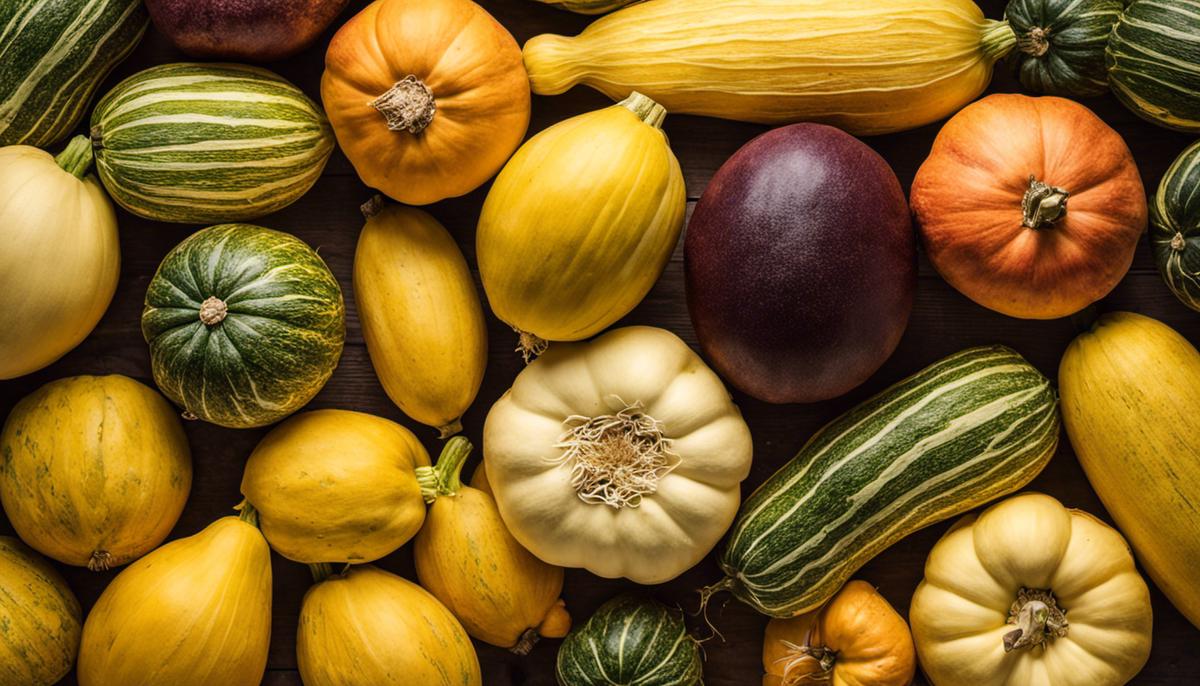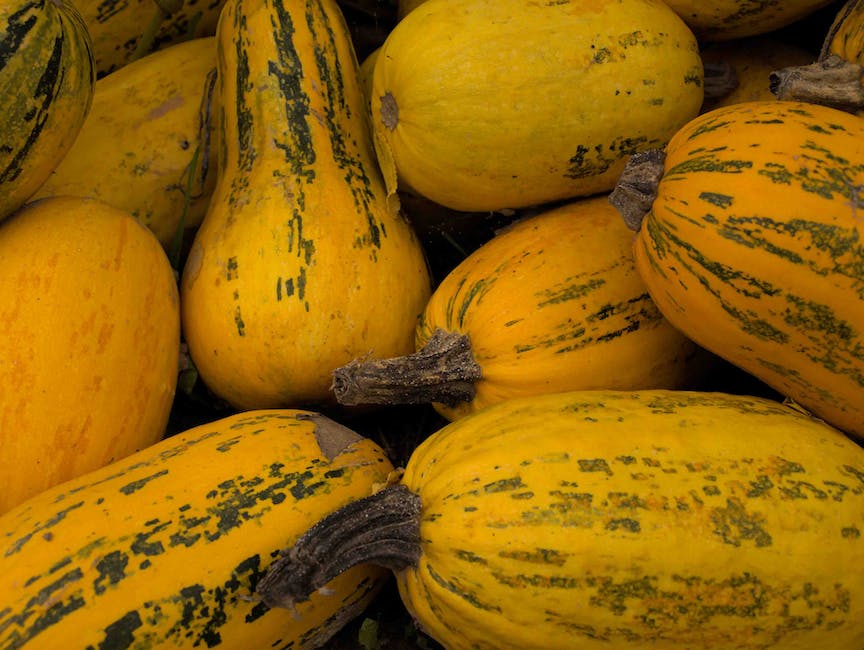Spot a Ripe Spaghetti Squash: A Quick Guide

Whether you’re a novice gardener exploring your passion for squash or a food enthusiast eager to craft the perfect spaghetti squash dish, understanding when this versatile vegetable is ripe is key. When ripe, a spaghetti squash unveils a vibrant treasure of flavor and nutrition, but how can one tell when it’s prime for harvest? This comprehensive guide delves into the nuances behind the spaghetti squash’s ripening process, detailing the textural changes, size, weight specifications, and color alterations that signal ripeness. Moreover, we also explore the typical harvesting timelines, considering the role that external factors like climate and growing conditions play in this crucial stage.
Understanding spaghetti squash characteristics
Article title: Understanding the Perfect Spaghetti Squash: The Art of Choosing Ripe Ones
Exciting adventures in the kitchen start with selecting the choicest of ingredients. As food enthusiasts, we hold a sacred belief in this. Dealing with fruits and vegetables, particularly, is an art in itself, but today, let’s focus on an absolute titan among them – the spaghetti squash.
Renown for its unique texture and surprisingly pasta-like strands, spaghetti squash is a versatile and nutritious cornerstone in numerous colorful and flavorful dishes. Whether you’re whipping up a hearty casserole or a light and zesty salad, knowing how to select a ripe spaghetti squash can truly elevate your culinary creations.
Getting down to business, let’s talk about the three fundamental characteristics that will guide your hand to the most luscious spaghetti squash. Not surprisingly, with wholesome organic veggies like this, the answer lies in assessing color, firmness, and size.
- Color: A ripe spaghetti squash will exhibit a uniform yellow, leaning towards a golden hue, across the entire exterior. No areas of green should be present as they signal unripeness. An intense, rich, even color hints at a flavor profile that will do justice to any recipe. However, while seeing a perfectly even color is a good sign, be cognizant of large patches of dark or rough skin – these could potentially be bruises or indications of rot.
- Firmness: Your spaghetti squash must resist when you press your fingers on its skin lightly. Soft spots or indents can likely be signs of premature spoilage. A solid feel suggests that the squash has attained peak ripeness while retaining its distinctive crunchy strands, keeping the flesh from becoming mushy when cooked.
- Size: The overall size of the squash plays an important role. The mature spaghetti squash generally weighs between 2 to 3 pounds, averaging between 8-9 inches in length. This range often guarantees a desirable “spaghetti” texture as excessive size can potentially interfere with the quality of the flesh, leading it to be stringy and less palatable.
All this might seem a tad overwhelming, but trust this journey of selecting a ripe spaghetti squash, it’s totally worth it! Being an informed food lover allows for memorable kitchen adventures, leading to creating plates that carry more flavor, more body, and more cheers at your dining table.
So, the next time you’re at your local farmer’s market or grocery aisle, hunting for the prime contender for your next spaghetti squash recipe, remember these three tips. Color, firmness, and size – the holy trinity of indicators that will guide you to a squash that offers vibrant flavors and perfect consistency.
Now, venture forth and make your kitchen come alive with a ripe, ready-to-cook spaghetti squash!

Spaghetti squash harvesting time
The Perfect Pick: Time Your Spaghetti Squash Harvest Right
Food is a beautiful sensory symphony that tantalizes with the prospect of enticing flavors, delightful aromas, and diverse textures. The wonderful versatility of culinary artistry truly emerges when we unlock the secrets of ingredients. Our ingredient in the spotlight today is the beguiling spaghetti squash. We’ve already delved into the visual, tactile, and dimensional markers that pinpoint a ripe specimen. Now we’re taking it a step further by diving into the timing aspect. The question is, when is the golden window for harvested spaghetti squash?
When it comes to timing the harvest wisely, counting the days since planting can provide you with a good indication. Usually, a spaghetti squash ripe for picking should age for about 75 to 100 days after planting. However, mother nature is never really precise. Hence, never rely solely on the time passed since planting, always pair this rule of thumb with markers of maturity such as color, firmness, and size we’ve earlier discussed.
But what if you’re not the one who put the seeds in the ground? No worries! There are a couple of tell-tale signs hinting at the best time to harvest spaghetti squash. One of them is the state of the squash’s stem. A perfect time to reap the squash is when the stem turns brown and becomes crusty. Yes, even the subtlest of cues from nature can guide us towards making the best culinary choices.
Additionally, a ripe spaghetti squash has an exoskeleton that can withstand the simple but efficient thumbnail test. To execute this test, merely try to pierce the skin of the squash with your thumbnail. If the skin gives in easily, it’s not ready. However, if your thumbnail fails to make a dent, you’ve hit the ripe squash jackpot!
Another crucial point to keep in mind is to refrain from picking spaghetti squash after a hard frost to prevent damage. Ideally, you would have your spaghetti squashes picked before the bitter cold sets in.
However, if one does not have the luxury of a controlled environment and your spaghetti squashes are exposed to a drops in temperature, look out for any blemishes or soft spots as these are fatally susceptible to rot.
In conclusion, harvesting spaghetti squash truly is a delightful dance between understanding and respecting nature’s nuances, and patience. Whether bought from your local market or harvested from your own backyard, a flawlessly timed spaghetti squash harvest will surely add a layer of exquisite taste and texture to your culinary exploits. There is indeed great joy in being a knowledgeable food lover looking to extract every bit of perfection from each ingredient. With these tips in hand, your voyage in the enticing world of spaghetti squash will be one full of satisfaction and deliciously memorable meals. Happy harvesting!

Photo by chrisliverani on Unsplash
Ripeness test for spaghetti squash
The Culinary Art of Harvesting the Perfect Spaghetti Squash
Sure, you’ve counted the number of days since you planted your spaghetti squash seeds, almost like an expectant parent marking the days off on a calendar. But selecting the ripest spaghetti squash involves a lot more than just counting days – it’s an art!
Now, let’s delve into some extra ripeness tests to seal your confidence at the moment of harvest. We’re going beyond the fundamental markers earlier discussed: color, firmness, and size. We’re about to unwrap the secrets of spaghetti squash mystery.
First off, don’t overlook the seemingly insignificant part of the spaghetti squash – the stem. When your spaghetti squash is ready for the spotlight, the stem will flaunt brown, crusty undertones. This transformation signals that your squash has reached maturity and is eager to feature in your next culinary masterpiece.
Next up – the classic standby – the thumbnail test! This tried-and-true method has been passed down through generations of food lovers. Gently press your thumbnail into the squash’s skin. If it remains unyielding under pressure, it’s a sign that your spaghetti squash is ripe and ready for the kitchen runway! If your thumbnail pierces the skin, however, it needs more time to flourish.
Here comes a word of caution – beware of hard frost! If you notice impending signs of frost, it’s time to bring your spaghetti squash indoors. Frost can discolor the squash and make it soft and susceptible to rot. Check the squash’s skin for blemishes or soft spots caused by unexpected drops in temperature. Identifying these anomalies promptly can save your long-nurtured spaghetti squash from frosty havoc.
In the end, harvesting is as much about patience, timing, and sheer culinary love as it is about understanding and respecting the nuances of nature. And that’s how you can elevate your spaghetti squash game from ordinary to extraordinary.
Remember, food is about more than just eating. It’s an emotional experience – a shared conversation over a dinner table, an exploratory journey through different cuisines, an endless experiment in the kitchen – and it all begins with quality ingredients in their prime. Choosing to harvest your spaghetti squash at the precise moment of ripeness adds not just complex flavors to your dishes, but also a rich story to your culinary adventure. Happy harvesting!

Harnessing the full potential of a spaghetti squash lies in understanding its ripening process, its harvest timeline, and useful methods for testing its ripeness. Armed with this knowledge, you can now confidently identify, select, and relish ripe spaghetti squash at its best. The delightful mix of texture, color, and taste will not only enhance your culinary experiences, but also help you appreciate the incredible journey that these remarkable vegetables undertake from vine to plate. Remember that these guidelines are not only about yielding the most delicious spaghetti squash outcomes but are also a gateway to a more conscious, informed, and sustainable approach to food consumption.



